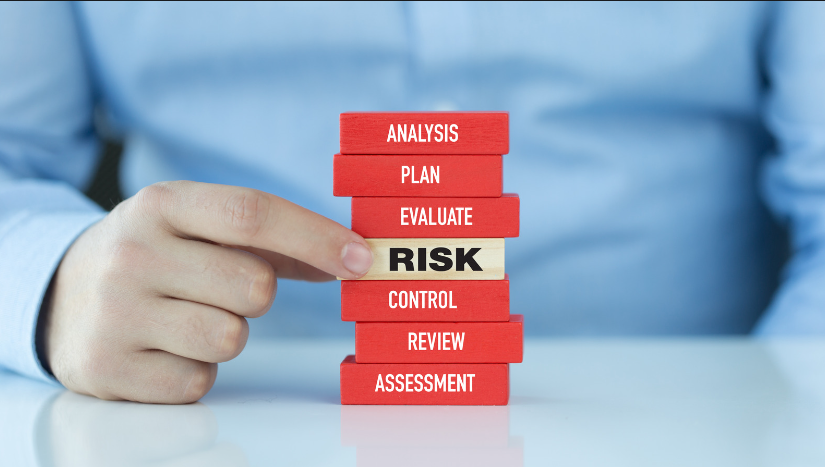In today’s digital age, businesses of all sizes face the constant threat of cyber attacks. Cyber liability insurance is an essential safeguard that provides protection from the financial repercussions of these attacks. With the increasing frequency and severity of cyber incidents, every organisation should consider cyber insurance for small and medium enterprises to mitigate financial losses from data breaches, ransomware, and network outages.
What is Cyber Insurance?
Cyber insurance, also known as cybersecurity insurance, is a type of coverage designed to protect businesses from internet-based risks and, more generally, risks relating to information technology infrastructure and activities. This insurance can cover a range of expenses associated with cyber incidents, including legal fees, notification costs, and business interruption losses.
Why Organizations Need Cyber Insurance
Traditional insurance policies typically do not cover cyber risks. General Liability (GL) insurance, for example, covers tangible property damage but not digital assets. As businesses increasingly rely on digital operations, the need for specialised cyber insurance has become critical to safeguard against financial losses due to cyber incidents.
Benefits of Cyber Insurance for Small and Medium Enterprises
Cyber insurance policies vary widely, but common benefits include coverage for breach response costs, indemnification for legal fees, forensic investigations, public relations expenses, and more. The immediate benefits help businesses manage the direct costs of responding to a cyber event and minimise the financial impact.
What Does a Cyber Insurance Policy Cover?
Cyber insurance policies can vary between carriers and policies, but generally, they cover five main areas:
- Direct Costs to Respond Responding to a cyber event incurs numerous direct costs, such as legal counsel, forensic investigation, victim remediation, and regulatory compliance. These costs can escalate quickly, making first-party coverage crucial.
- Liability to Others A cyber incident can trigger liabilities to third parties, including customers and regulatory bodies. Third-party coverage helps businesses navigate these liabilities, covering legal fees and settlements.
- Business Interruption and Reputation Damage Cyber events can disrupt business operations and damage reputation. Coverage for business interruption helps compensate for lost revenue, while reputation damage coverage helps manage the fallout with customers and stakeholders.
- Cybercrime Cyber incidents like funds transfer fraud (FTF) and business email compromise (BEC) can result in significant financial losses. Cybercrime coverage protects businesses from these types of attacks, ensuring financial stability.
- Recovery and Restoration Recovering from a cyber event involves restoring damaged technology and data. This coverage includes costs for external support, new equipment, and system restoration.
What Cyber Insurance Does Not Cover ?
There are specific exclusions in most cyber insurance policies. Common exclusions include:
- Loss of future revenue beyond the indemnity period.
- Brand or reputation damage beyond valuation loss.
- Errors and omissions (E&O) claims not related to cyber incidents.
- Employment, discrimination, and directors & officers-related claims.
How Much Cyber Insurance for Small and Medium Enterprises is Necessary?
Determining the amount of cyber insurance needed depends on several factors, including:
- Company Security Practices: Businesses with outdated or vulnerable technology are at higher risk.
- Types of Information Held: Sensitive data like PII, PHI, and credit card information increases risk.
- Availability of Credentials: Breached employee credentials can make a business more vulnerable.
- Company Clients: Supply chain attacks can compromise a business and its clients.
The appropriate coverage limits should reflect the potential exposure risk and the organisation’s ability to manage that risk through internal controls and external support.
What Does Cyber Insurance Cost?
The cost of cyber insurance varies based on several factors, including:
- Types of Technology: Insurers assess potential vulnerabilities in the business’s technology stack.
- Business Industry: Certain industries are more attractive targets for cybercriminals.
- Protected Data: The sensitivity of the data stored influences insurance costs.
- Coverage Amount: Higher coverage limits result in higher premiums.
On average, U.S. businesses spend around $145 per month on cyber insurance, totaling about $1,740 per year. Prices can fluctuate based on market dynamics, the sophistication of cyber threats, and the costs associated with incident remediation.
Do Small Businesses Need Cyber Insurance?
Yes, small businesses need cyber insurance. The FBI’s Internet Crime Report found that cybercrimes cost small businesses $2.4 billion in 2021. Cyber insurance helps SMBs manage the financial risks associated with cyber incidents, providing coverage for business downtime, regulatory compliance, equipment replacement, and more.
Benefits of Cyber Insurance for Small Businesses
- Compensate for Business Downtime: Covers lost revenue during downtime caused by a cyber attack.
- Ensure Regulatory Compliance: Covers notification costs and credit monitoring for affected clients.
- Cover Equipment Replacement: Provides funds for repairing or replacing damaged hardware.
- Cover Regulatory Fines: Helps pay fines resulting from data breaches.
- Recoup Data Recovery Costs: Covers expenses for forensic investigations and data recovery.
- Cover Ransom Compensation: Helps pay ransom demands in ransomware attacks.
Top 5 Objections to Cyber Insurance for Small and Medium Enterprises
Despite the benefits, some businesses hesitate to purchase cyber insurance. Common objections include:
- “I’m Too Small to Be a Target”: Small businesses often believe they are not targets, but cybercriminals frequently use automated attacks to target them.
- “We Don’t Rely on Technology”: Even basic technologies like email can be exploited for cyber attacks.
- “I’m Already Protected”: Cybersecurity tools are essential, but they can fail. Human error also contributes to breaches.
- “I Have Coverage in My Existing Insurance”: Traditional insurance usually does not cover the broad impacts of cybercrime.
- “Cyber Insurance Costs Too Much”: While it may seem expensive, the cost of a cyber incident can be much higher than the cost of insurance.
What Do Businesses Need from Cyber Insurance Brokers?
Businesses need clear and comprehensive information from cyber insurance brokers to make informed decisions. Brokers should:
- Provide Clarity: Explain the basics of securing coverage, its benefits, and associated costs.
- Paint the Risks: Highlight the current cybercrime landscape and its impact on businesses.
- Demonstrate Value: Show the typical costs of cyber incidents without insurance and the benefits of coverage.
- Explain Coverages: Outline coverage options in simple terms.
- Highlight Supplemental Benefits: Mention additional tools and services provided by insurers.
- Support with Statistics: Use current data to underscore the importance of cyber insurance.
Why Get Cyber Liability Insurance from Coalition?
Coalition offers a unique approach to cyber insurance, combining traditional coverage with proactive security services. Their “Active Insurance” model includes:
- Active Risk Assessment: Real-time evaluation of a business’s cyber risk profile.
- Active Protection: Continuous scanning and monitoring to reduce claim likelihood.
- Active Response: Expert support to mitigate damages and restore operations quickly.
Coalition’s policyholders experience 64% fewer claims than the industry average, making them a preferred choice for cyber liability insurance.
Steps to Get Approval for Cyber Insurance for Small and Medium Enterprises
To obtain cyber insurance approval, SMEs should follow these steps:
- Conduct a Cyber Risk Assessment
- Identify vulnerabilities and potential exposure risks.
- Document security measures and areas for improvement.
- Choose the Right Coverage
- Determine necessary coverage limits based on risk assessment.
- Consider first-party and third-party coverages, business interruption, and cybercrime protections.
- Prepare Documentation
- Compile necessary documentation, including security policies, incident response plans, and previous incident reports.
- Work with a Cyber Insurance Broker
- Select a broker with expertise in cyber insurance.
- Discuss coverage options and get recommendations tailored to the business’s needs.
- Implement Recommended Security Measures
- Address vulnerabilities identified in the risk assessment.
- Implement recommended security controls to reduce risk.
- Submit the Application
- Complete the insurance application with detailed information.
- Provide all required documentation and evidence of implemented security measures.
- Review Policy Terms
- Carefully review the policy terms, conditions, and exclusions.
- Ensure the coverage meets the business’s needs and addresses potential risks.
- Negotiate and Finalise the Policy
- Negotiate terms and premiums with the insurer.
- Finalise the policy and ensure all coverage details are understood.
By following these steps, SMEs can secure cyber insurance coverage that provides financial protection and peace of mind in the face of growing cyber threats.
Conclusion
In conclusion, cyber insurance is a crucial component of a comprehensive risk management strategy for businesses of all sizes. It provides essential financial protection against the escalating threat of cyber incidents, helping organisations recover from attacks and maintain operational continuity. With the right coverage and proactive security measures, businesses can mitigate the impact of cyber threats and ensure long-term resilience in the digital age.
FAQs
1. What types of cyber incidents are covered by cyber insurance?
Cyber insurance typically covers a range of incidents including data breaches, ransomware attacks, business email compromise (BEC), funds transfer fraud (FTF), and other types of cybercrime. Policies may also include coverage for business interruption, legal fees, forensic investigations, and recovery costs.
2. How much does cyber insurance cost for a small business?
The cost of cyber insurance varies depending on factors such as the business’s industry, the sensitivity of data stored, and the coverage amount. On average, U.S. small businesses spend around $145 per month, or about $1,740 per year. Prices can vary based on market dynamics and the sophistication of cyber threats.
3. Can cyber insurance help with regulatory compliance?
Yes, cyber insurance can assist with regulatory compliance by covering costs related to client notification and credit monitoring in the event of a data breach. It can also help cover fines and penalties imposed by regulatory bodies for failing to protect sensitive data.
4. What are the benefits of working with a cyber insurance broker?
A cyber insurance broker can provide clarity on coverage options, explain the benefits and costs, paint a realistic picture of cyber risks, and demonstrate the value of cyber insurance. Brokers also highlight supplemental benefits like proactive monitoring services and support with the application process.
5. Why is Coalition’s “Active Insurance” model beneficial for SMEs?
Coalition’s “Active Insurance” model is beneficial because it includes real-time risk assessments, continuous monitoring, and expert support for mitigating damages and restoring operations quickly. This proactive approach helps reduce the likelihood of claims and ensures comprehensive protection for policyholders.
Click here, to know more about Combating Social Engineering Attacks: Insights and Strategies for 2024.









